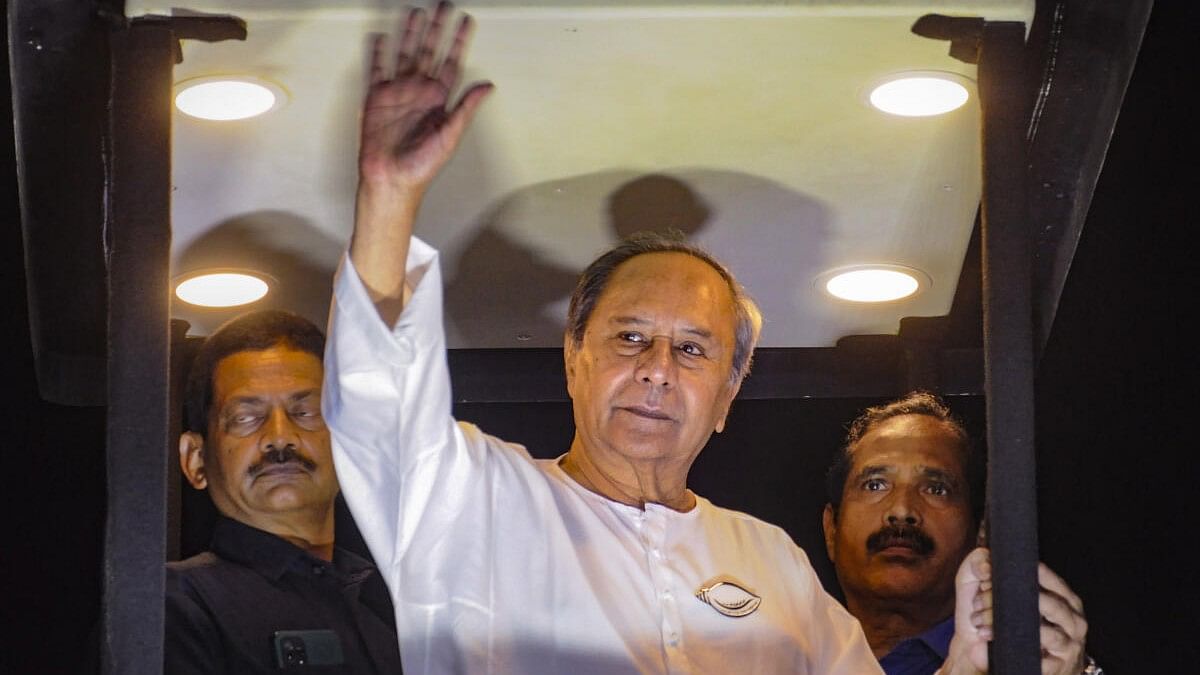
Leader of Opposition in Odisha Assembly, Naveen Patnaik.
Credit: PTI File Photo
Biju Janata Dal (BJD) president Naveen Patnaik in his new avatar as the Leader of Opposition, is becoming increasingly assertive to make his party emerge as an effective opposition to the Bharatiya Janata Party (BJP), in the state as well as the Centre.
While his political detractors, particularly those in the BJP, are sceptical of the future of Patnaik’s party after its poll debacle in June, the 77-year-old leader is sparing no opportunity to take on the ruling BJP.
The BJD has launched an awareness campaign at the gram panchayat level from August 16 to highlight the failure of the BJP government to fulfil its electoral promise to provide Rs 3,000-3,500 monthly allowance to elderly, physically challenged, widows, and destitute. The BJD government was giving Rs 1,000-1,400. The BJP government has announced enhanced allowances for those over 80 years, and for persons who have over 80 per cent disability.
Patnaik has also constituted a sort of shadow-cabinet in which its legislators have been assigned different departments so that they could effectively monitor the working of the Mohan Majhi government, and raise pertinent issues in the Assembly.
What seemed to have provoked Patnaik is the recent defection of his party’s Rajya Sabha member Mamata Mahanta to the BJP bringing down the party’s tally in the upper house from nine to eight. It’s ironic that the lone BJP Rajya Sabha member from Odisha, Union Railway Minister Ashwini Vaishnaw, had made it to the upper house with the support of the BJD a few months before the general elections.
The BJD’s strength in the Rajya Sabha is crucial for the party as the Narendra Modi-led NDA government does not have a majority in the upper house. Besides, the BJD, for the first time since its inception in 1997, has no presence in the Lok Sabha. Of the 21 Lok Sabha seats, the BJP secured 20 seats, and the Congress had to be content with one seat.
To keep the party organisation intact, Patnaik has formed a 15-member committee headed by senior leader Debi Prasad Mishra to co-ordinate various activities of the party across the state. After Mahanta’s defection, speculation is rife that a few more Rajya Sabha members could switch over to the BJP.
The BJD, since its inception till recent elections, was on a winning streak. From 1998 to 2009 it was in an alliance with the BJP. The parting of ways, following the Kandhamal riots, further enhanced Patnaik’s and the BJD’s popularity. However, Patnaik maintained cordial ties with the BJP-led Centre since 2014.
The BJD-BJP ties reached a level where they held talks about forming an alliance ahead of the 2024 polls. But the talks fell through and the two fought a fierce poll battle. It is a case study that the BJP, which took the help of the BJD to pass many crucial Bills in Parliament in the past decade, electorally routed the regional party.
The BJD has 51 MLAs in the 147-strong Assembly and is in power in all the 30 zila parishads and most urban local bodies. That said, the challenge for Patnaik is to manage a huge party structure when not in power.
Patnaik, however, is in no mood to concede further space to the BJP. With no second-rung leadership in sight, he has become proactive and is meeting grassroots-level workers and party functionaries at frequent intervals.
On the other side, the Congress, with 14 legislators, is also hoping that the BJD leaders, who may not favour the BJP, would enter its fold. Though Patnaik is quite cautious and has not given any hint about his party joining the I.N.D.I.A. bloc, a section of the Congress leaders feel that the BJD would have to seek their support to contain the BJP. This despite the Congress being the main casualty of Patnaik’s policy of maintaining ‘equidistance’ from both national parties in Odisha. Patnaik had earlier assiduously cultivated many Congress leaders in the state and brought them into his party before elections, and damaged the prospects of the grand old party.
For now, it seems that Patnaik, Odisha’s longest-serving chief minister, will be on his own, and will have to strive hard to keep his party’s rank and file together.
(Prafulla Das is a Bhubaneswar-based journalist.)
Disclaimer: The views expressed above are the author's own. They do not necessarily reflect the views of DH.